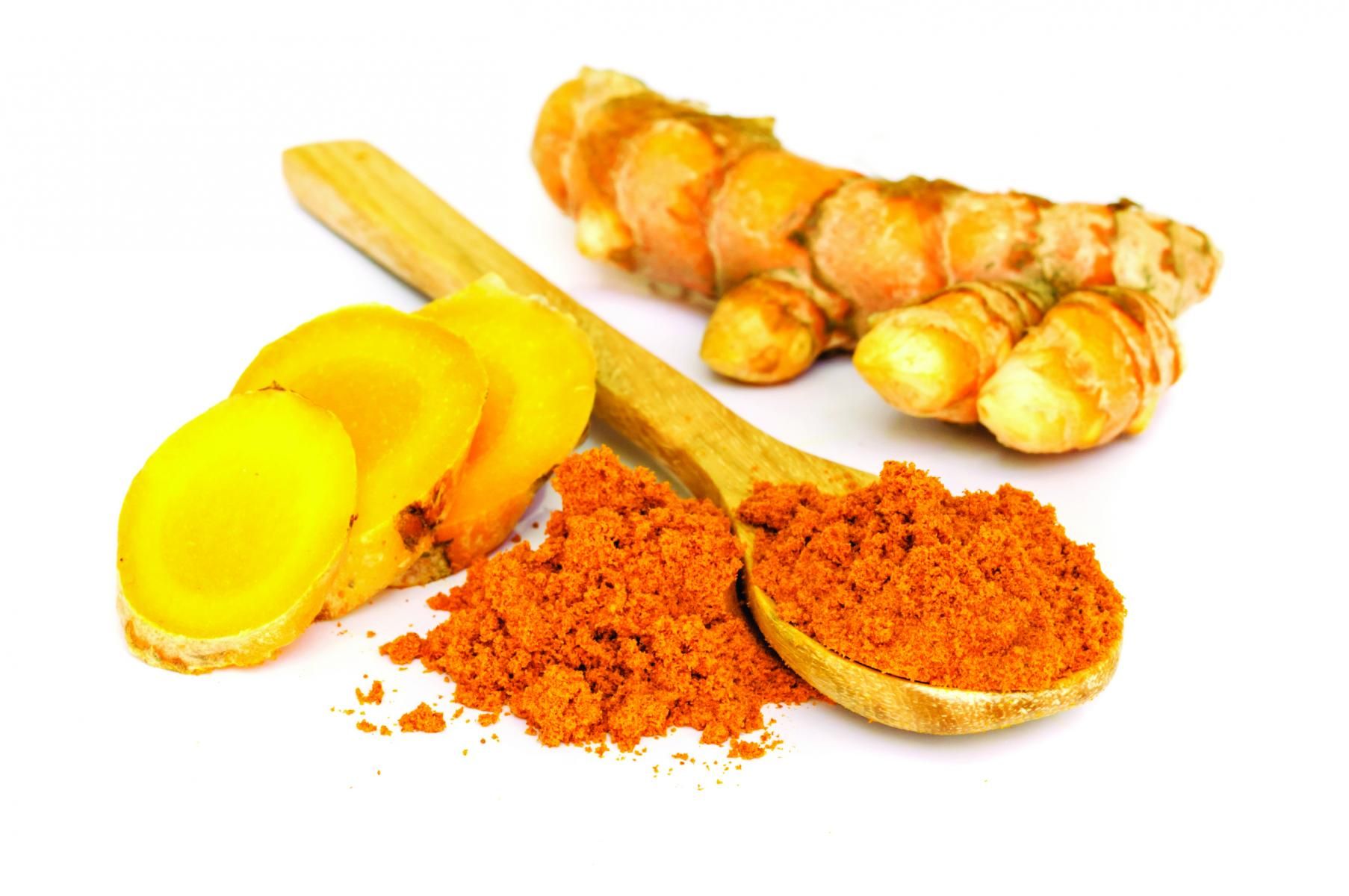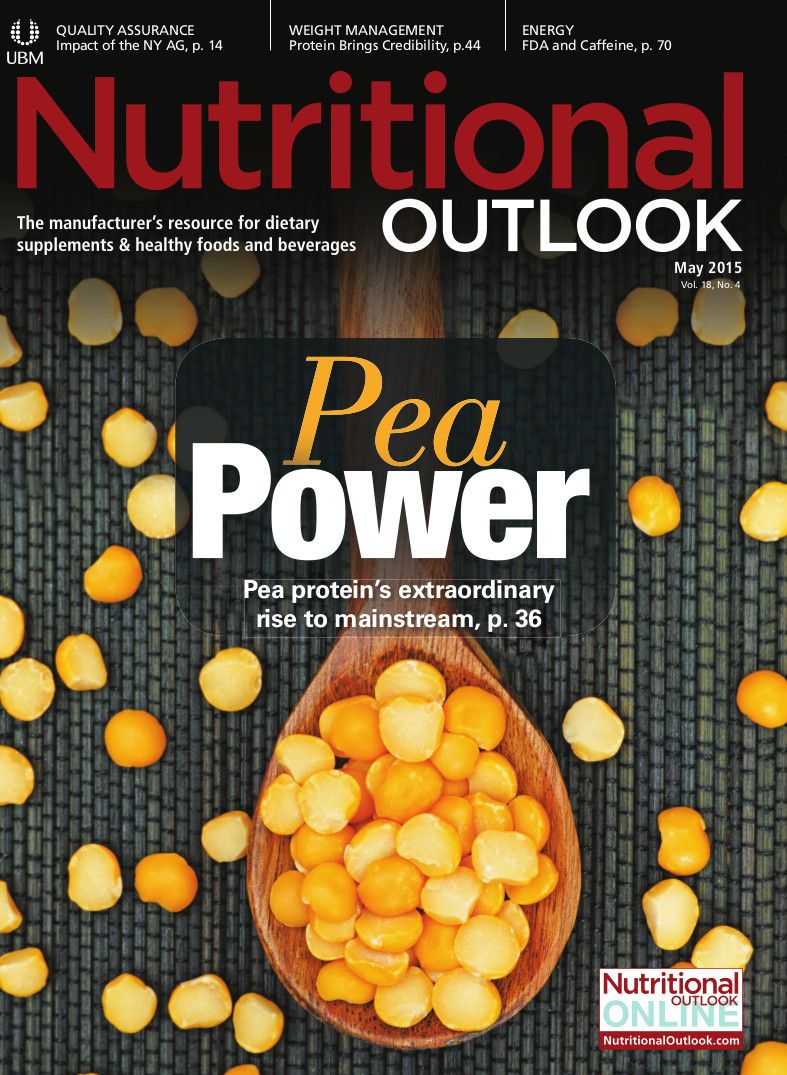Turmeric Ingredient Spotlight
Scientific research and clinical studies in the modern era validate turmeric’s traditional use.

By Shaheen Majeed, Sabinsa Corp.
Turmeric (
Curcuma longa
) is a plant that grows in tropical South Asia. The history of turmeric dates back to Marco Polo, who described turmeric in his journals when traveling to India in 1280 and introduced it to the Europeans on his return.
1
Turmeric has long been used as a spice, a food color, and a natural remedy for various ailments in India’s Ayurvedic medical tradition dating back thousands of years. It has been used historically to treat chronic diseases and inflammation. In addition, turmeric has been used as an anti-aging, antibacterial, wound healing, analgesic, and antidepressant agent.
2, 3
Scientific research and clinical studies in the modern era validate turmeric’s traditional use-in particular, the curcuminoids produced by the rhizome, or the underground stem, of Curcuma longa. Turmeric’s principal curcuminoid is curcumin, turmeric’s primary pharmacologically active ingredient. Other curcuminoids are demethoxycurcumin and bisdemethoxycurcumin.
Major, longstanding interest relates to curcumin’s effect on oxidative stress, joint inflammation, and hepatoprotection, but in recent times studies on curcuminoids have explored a wider range of health benefits in areas of anti-aging, hyperlipidemia, obesity, and metabolic syndrome.
Modern Science
* Editor’s note: All clinical studies mentioned ahead were performed on Sabinsa Corp.’s (East Windsor, NJ) standardized curcumin extract, a composition containing naturally occurring curcuminoids-curcumin, demethoxycurcumin, and bisdemethoxycurcumin-which has been patented as a bioprotectant4 against biological tissue damage from free radicals.
Glycation
Glycation is part of the aging process in which sugar molecules chemically bond with human DNA, lipids, and proteins, damaging them and leading to completely irreparable compounds called advanced glycation end-products, or AGEs. Glycation has been implicated in many age-related chronic conditions and in the aging process itself. In skin, glycation reactions are responsible for weakening collagen fiber’s regenerative ability, which leads to the characteristics we commonly associate with visible skin aging: wrinkling, sagging, and looseness.
Curcumin has potent anti-glycation properties, suggesting that it may be employed as an adjunctive treatment in preventing glycation.5
Obesity
High blood fats, or hyperlipidemia, is a complication and often a risk factor associated with obesity. Curcumin has been demonstrated to have excellent lipid-lowering properties in obese subjects suffering from dyslipidemia.6
Metabolic Syndrome
Metabolic syndrome, a term little known prior to the last decade, has already reached epidemic-like proportions today, affecting millions. Metabolic syndrome is often associated with an increase in plasma triglycerides and LDL cholesterol, as well as low HDL cholesterol levels. Clinical studies on curcuminoids have shown remarkable effects on reducing lipid levels and thus reducing the risk factors for coronary heart diseases in metabolic syndrome patients.7
Curcumin’s metabolites, on the other hand, have shown the ability to trigger insulin release through free radical quenching and stimulating the body’s own endogenous antioxidant enzymes-SOD, catalase, and glutathione peroxidase. Curcumin metabolites such as tetrahydrocurcuminoids (THC) allowed the release of insulin into the blood more efficiently than curcumin alone in both animals with normal glucose and high glucose levels.8
Neurological Effects
Animal-model studies on curcumin suggest its neuroprotective activity. Initial studies demonstrate that curcumin minimizes brain damage in rodents when they are administered a brain-disrupting chemical, D-galactose, which causes rapid senescence, or senility, in these animals. This accelerated brain damage is a model for poor mental health that also occurs in humans. One study shows that curcumin passes the blood-brain barrier and exerts strong antioxidant effects when it gets there.9
Forced swimming tests in animal models showed that curcumin has a positive effect on mood by shortening the immobility period in animals when they are placed in water and forced to swim. Curcumin worked by increasing serotonin levels in the brain. It also lowered the dose of mood-elevating drugs needed to achieve therapeutic effects.10 The healthy mood effects of curcumin were enhanced when combined with small doses of piperine (Sabinsa’s patented BioPerine ingredient).11
Since cognitive decline is often related to age, the safety of any intervention in geriatric subjects cannot be ignored. A recent study on curcuminoids in geriatric subjects suffering from mild to moderate symptoms of Alzheimer’s disease provided support that curcumin can be considered safe when taken for long duration in geriatric subjects.12
Curcumin has also been studied for its benefits in management of major depressive disorders (MDD), a neurological condition. A clinical study conducted on over 100 subjects for six weeks showed improvement in the HADS score (Hospital Anxiety and Depression Scale) in subjects taking curcuminoids, thus improving the quality of life.13
Chemistry of Curcumin
The chemistry of curcumin in the body is quite interesting, and it is extremely important to understand it to gain the greatest benefits from this gift of nature.
Curcumin tends to metabolize quickly in the body, a fact that we understand from observations of its rapid disappearance from the blood. Recent studies have shown that the effect of curcuminoids in the body may partly stem from its active metabolites, one of which is THC. In 2011, Hassaninasab et al. discovered that the curcuminoids in turmeric, including curcumin itself, undergo immediate biotransformation by NADPH curcumin/dihydrocurcumin reductase to form active curcuminoid metabolites such as THC.14 Sabinsa Corp. posits that any low systemic levels of curcumin itself may be related to curcumin’s conversion into its metabolites. Curcumin also forms the conjugates such as curcumin sulphates and glucuronides, which have been studied to be inactive or do not have any therapeutic benefits.
Bioavailability Debate
Despite the fact that knowledge on the metabolism of curcumin is still limited, bioenhanced curcuminoids nevertheless continue to be introduced in the market today promoting more bioavailable forms of curcumin. In our opinion, these bio-enhanced curcuminoids may be only measuring curcumin glucuronides, and their “enhancement” methods are simply raising levels of inactive curcumin metabolites in the blood at the expense of active metabolites from curcuminoids.
We believe that current science on curcumin indicates the need to look more deeply into the metabolites of this ingredient, as these metabolites may hold the key to releasing the true potential of the biological activity of curcumin in the body.
Shaheen Majeed is the marketing director of Sabinsa (East Windsor, NJ), a leading supplier of quality herbal ingredients of Indian origin supported by clinical studies, patents, and trademarked brands.
Also read:
Curcumin Alleviates Depression Symptoms, New Study Shows
Soluble Curcumin May Have Big Implications for Turmeric Beverages
Turmeric: 2015 Ingredients to Watch for Food, Beverage, Supplements
Bioavailable Curcumin Ingredients Compete In New Study
Turmeric Beverages, Yellow or Not (Slideshow)
References
- Aggarwal BB et al., “Curcumin: the Indian solid gold,” Advances in Experimental Medicine and Biology, vol. 595 (2007): 1-75
- Krishnaswamy K, “Traditional Indian spices and their health significance,” Asia Pacific Journal of Clinical Nutrition, vol. 17, Suppl 1 (2008): 265-268
- Nagpal M et al. “Role of curcumin in systemic and oral health: An overview,” Journal of Natural Science, Biology, and Medicine, vol. 4, no. 1 (January 2013): 3-7
- Majeed et al. “Bioprotectant composition, method of use, and extraction process of curcuminoids.” US patent 5861415.
- Bengmark S et al., “Plant-derived health: the effects of turmeric and curcuminoids,” Nutrición Hospitalaria, vol. 24, no. 3 (May–June 2009): 273-81
- Mohammadi A et al., “Effects of supplementation with curcuminoids on dyslipidemia in obese patients: A randomized crossover trial,” Phytotherapy Research, vol. 27, no. 3 (March 2013): 374-379
- Panahi Y et al., “Antioxidant and anti-inflammatory effects of curcuminoid-piperine combination in subjects with metabolic syndrome: A randomized controlled trial and an updated meta-analysis,” Clinical Nutrition. Published online ahead of print January 7, 2015.
- Murugan P et al., “Influence of tetrahydrocurcumin on erythrocyte membrane bound enzymes and antioxidant status in experimental type 2 diabetic rats,” Journal of Ethnopharmacology, vol. 113, no. 3 (September 25, 2007): 479-86
- Banji D et al., “Curcumin and piperine abrogate lipid and protein oxidation induced by D-galactose in rat brain,” Brain Research. Published online ahead of print April 6, 2013.
- Kulkarni SK et al., “Antidepressant activity of curcumin: involvement of serotonin and dopamine system,” Psychopharmacology, vol. 201, no. 3 (December 2008): 435-342
- Rinwa P et al., “Suppression of neuroinflammatory and apoptotic signaling cascade by curcumin alone and in combination with piperine in rat model of olfactory bulbectomy induced depression,” PLoS One, vol. 8, no. 4 (April 17, 2013): e61052.
- Ringman JM et al., “Oral curcumin for Alzheimer’s disease: Tolerability and efficacy in a 24 week randomized, double blind, placebo controlled study,” Alzheimer’s Research & Therapy, vol. 4, no. 5 (October 2012): 43
- Panahi Y et al., “Investigation of the efficacy of adjunctive therapy with bioavailability-boosted curcuminoids in major depressive disorder,” Phytotherapy Research, vol. 29, no. 1 (January 2015): 17-21
- Hassaninasab A et al., “Discovery of the curcumin metabolic pathway involving a unique enzyme in an intestinal microorganism,” Proceedings of the National Academy of Sciences of the United States of America, vol. 108, no. 16 (April 19, 2011): 6615-6620
Photo © iStockphoto.com/tropper2000
























